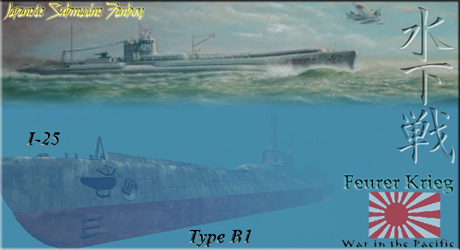Cuttlefish
Posts: 2454
Joined: 1/24/2007
From: Oregon, USA
Status: offline

|
July 23, 1942
Location: 75 miles west of Wake
Course: Holding position
Attached to: TF 76
Mission: Air combat
System Damage: 0
Float Damage: 0
Fires: 0
Fuel: 292
Orders: Escort CV Shokaku to Wake Island.
---
Hibiki matches course with Shokaku as the big carrier launches aircraft. Less than 30 miles to the south the main body of Kido Butai is doing the same thing. No enemy forces interfere with operations; not even any submarines are spotted, though a number of them are known to be in the area.
The main activity aboard ship, then, is attempting to make sense out of what they can hear of the battle raging on the island only 75 miles away. As the day goes on the mood aboard ship turns grim, for what they are hearing is not good.
---
Things had gone poorly from the start for the Japanese invasion. The landings had been scheduled to begin under cover of darkness, but the transports had difficulty loading their landing barges in the moderate seas. By the time they were ready the tide was too low to permit them to cross the reef, so there were several more hours of delay. The sun was well up by the time the Japanese troops moved towards the island.
The Japanese plan called for two divisions to each assault a front of about a mile in width along the south side of the island. The 18th Division would land on Wake Island, while 48th Division would invade Wilkes to the west. Supporting their efforts would be a regiment of engineers, and a regiment of tanks waited aboard ship to land later and exploit the Japanese bridgehead.
Waiting for them on Wake Island was a division of infantry and a regiment of marines. These troops had been under bombardment for days. Most of their heavy weapon emplacements had been targeted and knocked out. They had been on short rations for the past few weeks. But over the last several months they had constructed an extensive and cunning network of pillboxes, trenches, and other defenses. The entire atoll had been turned into a fortress.
The American plan called for meeting the Japanese at the waterline. They had little choice; on Wake Island there was little inland territory to defend. The defenders were determined; they knew that there was no place to which they could retreat. They had to fight and win. Death or imprisonment were the only alternatives.
They held their fire as the Japanese barges approached. A few guns engaged the Japanese transports and their escorts. Some hits were scored, but most of the guns were quickly silenced by Japanese warships.
Wake Island lay under a pall of smoke as the Japanese barges approached the island. Still the Americans held their fire. Then, as the Japanese drew within about 100 yards of the shore, the word went out to open fire.
The effect was devastating. A storm of fire swept over the Japanese ships. The slow, wallowing Japanese barges were easy targets. Many were sunk. The surviving craft forged on, and screaming Japanese infantry leaped from them as they grounded.
The Japanese 18th Division took by far the worst of the fire. On the eastern side of their landing zone the disembarking troops were massacred almost to a man as they tried to advance up the exposed beach. To the west the troops also took heavy casualties, but managed through sheer weight of numbers to overrun some American positions. The second wave of barges was diverted entirely to the western sector to take advantage of the small beachhead. Through the day it was slowly expanded, though at a heavy price.
On Wilkes Island the 48th Division took serious casualties but quickly established a beachhead and began to advance. For a time it looked as though they might overrun the island and link up with the 18th Division. A desperate American stand a few hundred yards from the causeway stopped the advance, however, and the exhausted Japanese troops were unable to renew their attack by nightfall.
On the night of the 22nd the Japanese troops attempted to infiltrate the American positions. This lead to a long, terrible night for the defenders, and in several places they were forced to fall back. They still held the vital causeway between Wake and Wilkes, however.
More Japanese troops attempted to land throughout the night and into the morning of the July 23rd. American fire was still heavy, however, and even on these landings Japanese casualties approached 50 percent.
On the morning of the 23rd the Americans committed their reserves and launched a vicious counterattack against the 18th Division positions. The defenders held for a time, but the American artillery fire was heavy and accurate and the Japanese troops had suffered too many casualties the previous day. By late afternoon their positions were broken, and after that the bridgehead was overrun. Among the last defenders was Lieutenant General Mutaguchi. His left shoulder was shattered by a machine gun bullet, but an aide helped him draw his sword and set it against some rocks. As American troops closed in General Mutaguchi flung himself onto the blade, and the Japanese 18th Division was finished as an effective fighting force.
The 48th division, now supported by engineers and tanks, managed to hold their lines throughout the day. As night fell the Japanese had had enough, however. At the urging of Admiral Yamamoto, Major General Horri grimly ordered the remaining Japanese on the island to be evacuated. The evacuation proceeded in good order throughout the evening and into the 24th. The Americans attempted to renew their attack, but they too had suffered heavy casualties and the troops were tired. The Japanese lines contracted but held as night fell. By the 25th only a rear guard remained. This was overrun, and the Battle of Wake Island was over.
Japanese casualties totalled nearly 20,000, most of them fatalities. American casualties amounted to over 3000 killed and wounded. The Japanese effort to retake Wake Island had ended in bitter defeat.
---

 Attachment (1) Attachment (1)
|
 Printable Version
Printable Version


























 New Messages
New Messages No New Messages
No New Messages Hot Topic w/ New Messages
Hot Topic w/ New Messages Hot Topic w/o New Messages
Hot Topic w/o New Messages Locked w/ New Messages
Locked w/ New Messages Locked w/o New Messages
Locked w/o New Messages Post New Thread
Post New Thread